Dysplastic Nevi - Atypical Moles
It's important to be vigilant during at-home self-examinations. Look out for the distinct features of dysplastic nevi, such as size, shape, border irregularity, and color variation. If you notice any suspicious moles, it's crucial to notify your trusted dermatology provider at one of our offices. Scheduling a total body skin exam is an essential step in maintaining healthy skin and allows for the timely identification and proper treatment of dysplastic nevi.
Regular monitoring of any evolving moles is key to ensuring skin health. Early detection and intervention can make a significant difference in outcomes, so make sure to keep an eye on any changes and seek professional evaluation when necessary. By staying proactive with skin examinations and professional check-ups, you can effectively manage and mitigate the risks associated with dysplastic nevi.
Examples of Dysplastic Nevi
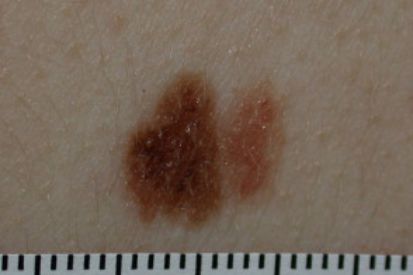
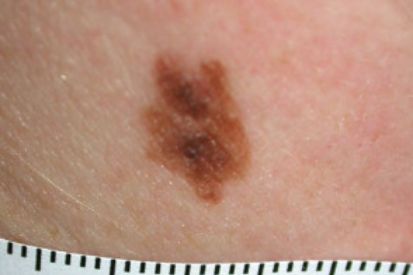
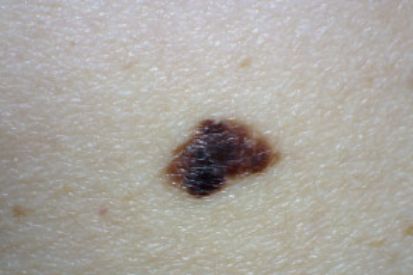
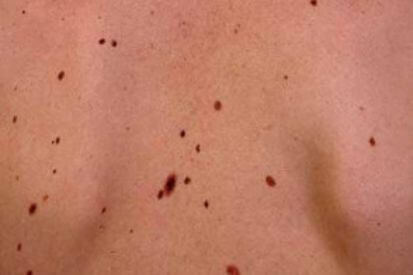
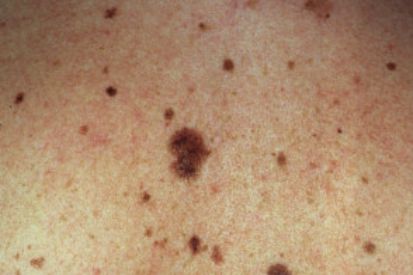
What are the Symptoms of Dysplastic Nevi?
- Atypical moles are a size that exceeds that of common moles.
- These moles often exhibit a range of colors, including tan, brown, and red, creating an uneven or variegated appearance.
- The shape is irregular, featuring indistinct borders.
- They may appear either flat or slightly raised on the skin's surface, adding to their atypical nature.
- Dysplastic nevi are known for their potential to change over time. These changes can be alterations in size, color, or overall shape.
Causes of Dysplastic Nevi
- A family history of dysplastic nevi or melanoma indicates genetic predisposition.
- Exposure to UV radiation.
- Fair-skinned individuals with more moles are susceptible.
How to Prevent Dysplastic Nevi
- Sun Protection Measures: Wear protective clothing, including hats and long sleeves and use broad-spectrum sunscreen with a high SPF. Seek shade during peak sunlight hours between 10 a.m. and 4 p.m.
- Regular Skin Monitoring: Perform regular at-home self-exams of the skin and moles. Notify your dermatologist provider right away if you notice any unusual or evolving moles. It is also important to schedule an annual total body skin exam with one of our trusted providers.
- Awareness of Risk Factors: Individuals with a family history of dysplastic nevi or melanoma should be particularly vigilant, as they are at higher risk.
- Avoid Tanning Beds: Steer clear of tanning beds to reduce the risk of dysplastic nevi development.
FAQs for Dysplastic Nevi
Most dysplastic nevi, also known as atypical moles, are not cancerous, and the majority do not develop into melanoma. However, individuals with a higher number of these moles may have an increased risk of developing melanoma, a serious form of skin cancer. Regular skin checks and monitoring by a dermatologist are essential for early detection and management. Additionally, self-examinations looking for changes in size, shape, color, or texture of moles are crucial for maintaining skin health and catching potential issues early.
Dysplastic nevi are typically identified during routine skin examinations performed by a dermatologist. During these exams, the dermatologist will look for moles that exhibit atypical features such as irregular shapes, uneven borders, and color variations. If a mole appears suspicious, a biopsy may be performed to determine whether it is benign or cancerous. This involves taking a small sample of the mole tissue and examining it under a microscope.
Regular skin checks are crucial for individuals with dysplastic nevi. Dermatologists will monitor these moles over time to detect any changes in size, shape, color, or texture, which could indicate the development of melanoma. Patients are also encouraged to perform self-examinations at home, looking for any signs of change and reporting them to their dermatologist promptly. Consistent monitoring and early detection are key to effectively managing dysplastic nevi and reducing the risk of skin cancer.
While most dysplastic nevi do not transform into melanoma, individuals with these atypical moles are at an increased risk of developing melanoma compared to those without dysplastic nevi. This heightened risk necessitates vigilant monitoring.
Regular skin examinations by a dermatologist are crucial for early detection. During these exams, the dermatologist will carefully assess the moles for any changes in size, shape, color, or texture that could indicate the onset of melanoma. In addition to professional check-ups, self-examinations are equally important. Individuals should regularly check their skin for any new moles or changes in existing ones and report these findings to their dermatologist promptly. By combining professional and self-monitoring, individuals can effectively manage their risk and ensure early intervention if melanoma develops.
Yes, dysplastic nevi can develop on any part of the body. However, they are most commonly found in areas that receive regular sun exposure, such as the back, chest, and limbs. Despite their common locations, dysplastic nevi can also appear in less exposed areas, so it's important not to overlook any part of the body during examinations.
Conducting thorough self-examinations is crucial. This involves checking all areas of the skin, including those that are harder to see, such as the scalp, behind the ears, and between the toes. Using mirrors or enlisting the help of a partner can be beneficial for a comprehensive check. Regular professional skin examinations by a dermatologist are equally important for monitoring dysplastic nevi and detecting any changes early. These combined efforts help ensure any potential issues are identified and addressed promptly.
A total body skin exam by a dermatologist is crucial for several key reasons. Firstly, it serves as a proactive measure for the early detection of skin cancers, including melanoma, the deadliest form of skin cancer. Skin cancers are often highly treatable when identified at an early stage. During a comprehensive examination, the dermatologist thoroughly assesses moles, birthmarks, and any unusual skin changes that might indicate potential issues, ensuring timely and effective intervention.
Secondly, a dermatologist can identify and diagnose a wide range of skin conditions, including dermatitis, psoriasis, and infections. Early detection and treatment of these conditions can prevent them from escalating into more serious health issues, improving overall skin health and quality of life.
Additionally, a total body skin exam provides an invaluable opportunity to discuss and address any concerns or questions about skin health, sun protection, and skincare routines. Dermatologists can offer personalized advice on skin cancer prevention, emphasizing the importance of protective measures such as wearing sunscreen, using protective clothing, and avoiding excessive sun exposure. This guidance helps patients adopt effective skincare habits that contribute to long-term skin health and reduce the risk of future skin problems.
Watch: Healthy Skin with Total Body Skin Exams
How to Treat Dysplastic Nevi
- Surveillance and Monitoring: One of our dermatologists will closely monitor dysplastic nevi due to their potential to transform into melanoma. Regular at-home self-exams are key – make sure to notify your dermatologist of any unusual or evolving moles. It is also important to schedule regular Total Body Skin Exams at one of our locations.
- Surgical Removal: If dysplastic nevi exhibits concerning features or irregularities during our providers’ evaluations, your dermatologist may recommend an excisional biopsy or complete removal.
- Reducing Malignancy Risk: Excisional biopsy aims to reduce the risk of potential malignancy by removing atypical moles.
- Regular Follow-ups: Individuals with a history of dysplastic nevi or a family history of melanoma should maintain regular visits with one of our skincare experts.
- Optimal Skin Health: While not all dysplastic nevi require treatment, their careful monitoring is crucial for optimal skin health and cancer prevention.
Featured Blogs

- Skin Cancer
- Skin Exams
Skin Cancer Prevention: 5 tips and tricks for your skin's protection.
Read More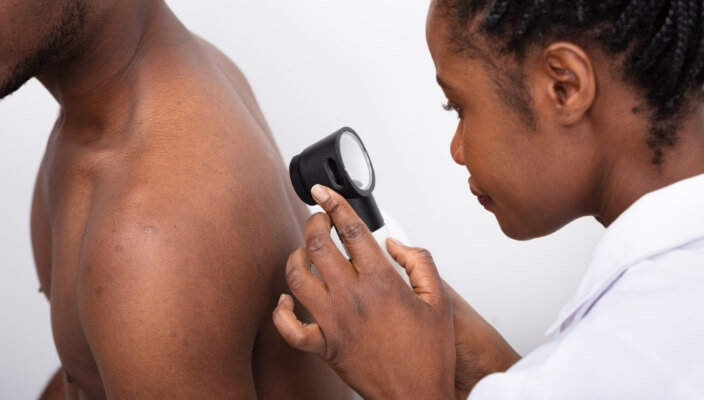
- Skin Cancer
- Skin Exams
Total Body Skin Exams (TBSEs) are crucial for healthy skin. Learn more about the importance of TBSEs and skin cancer detection.
Read More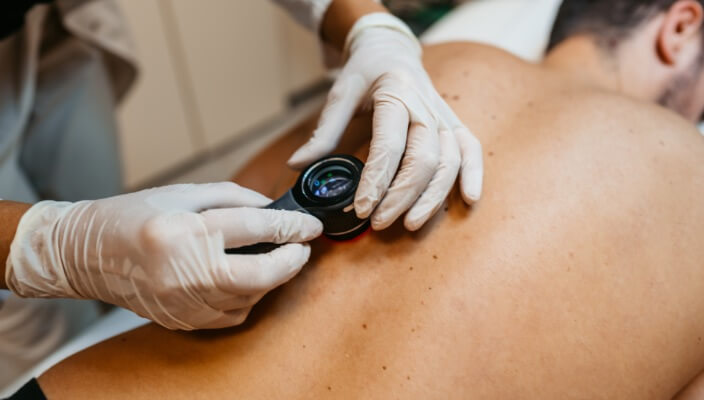
- Skin Cancer
- General Dermatology
- Skin Exams
Learn more about how to spot melanoma and what you can do to keep your skin healthy.
Read MoreFeatured Products for Sun Protection
Check your local office for current stock!
Check your local office for current stock!


